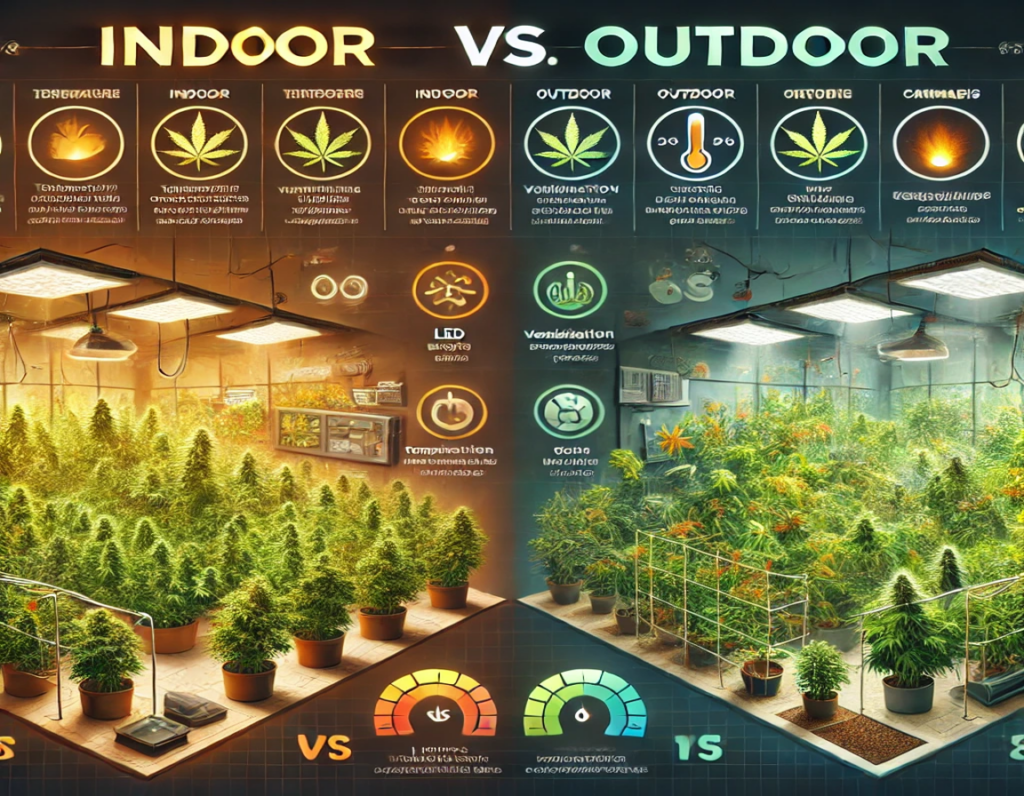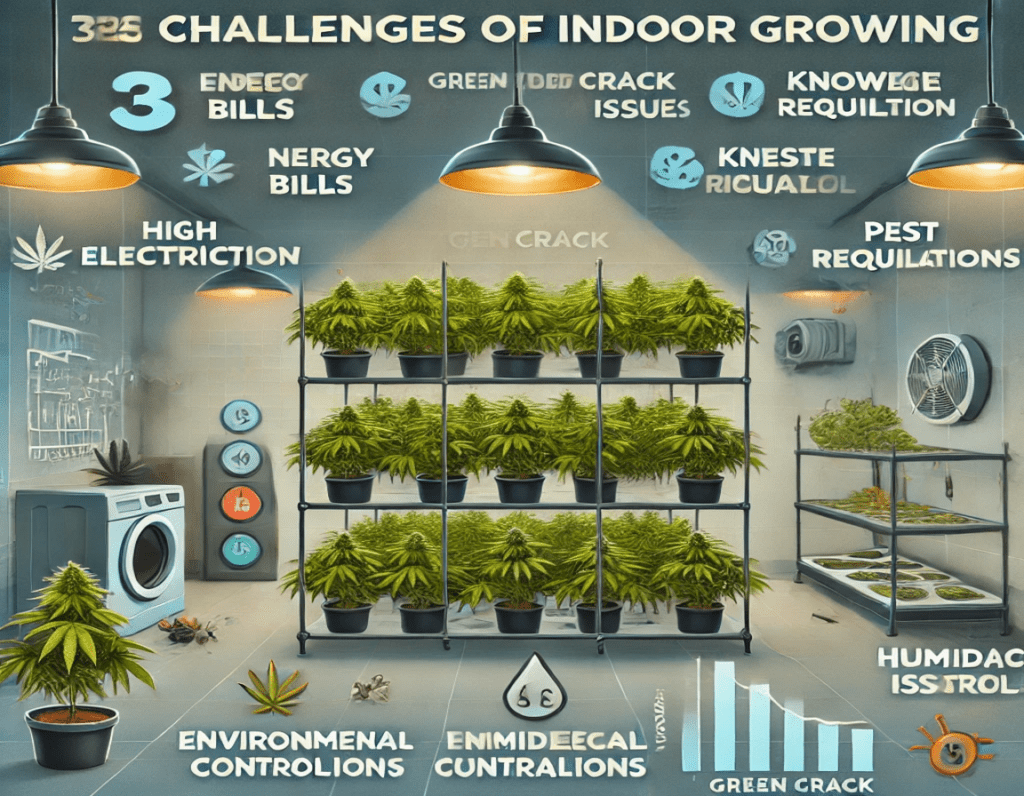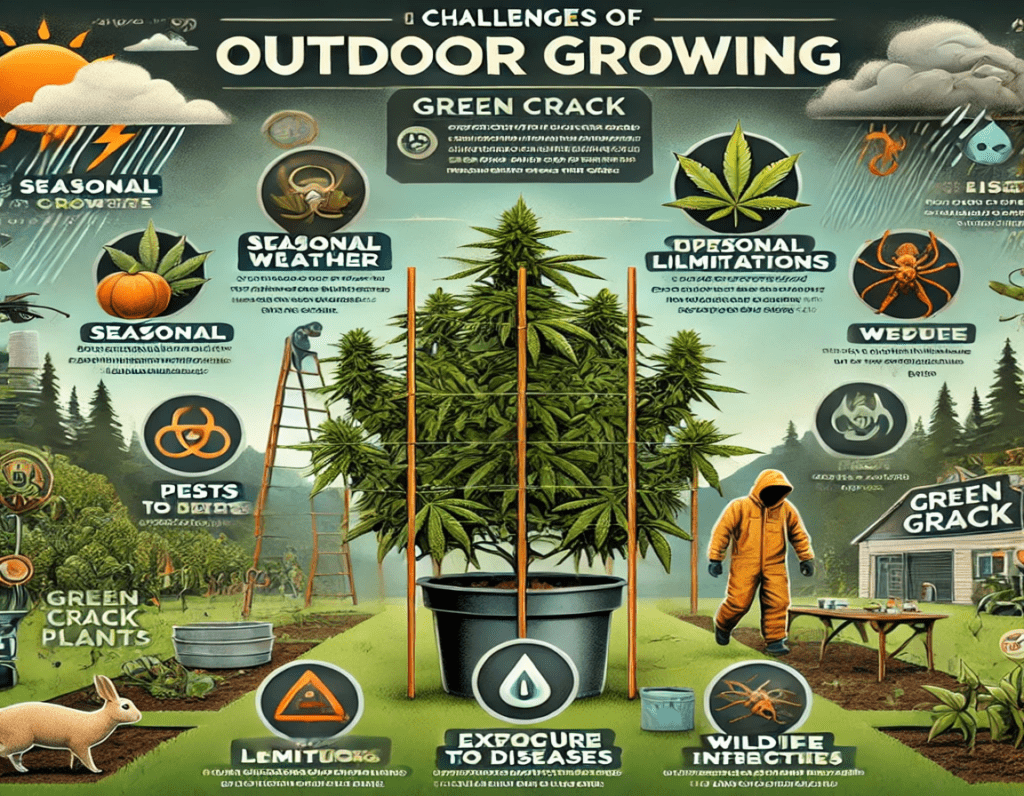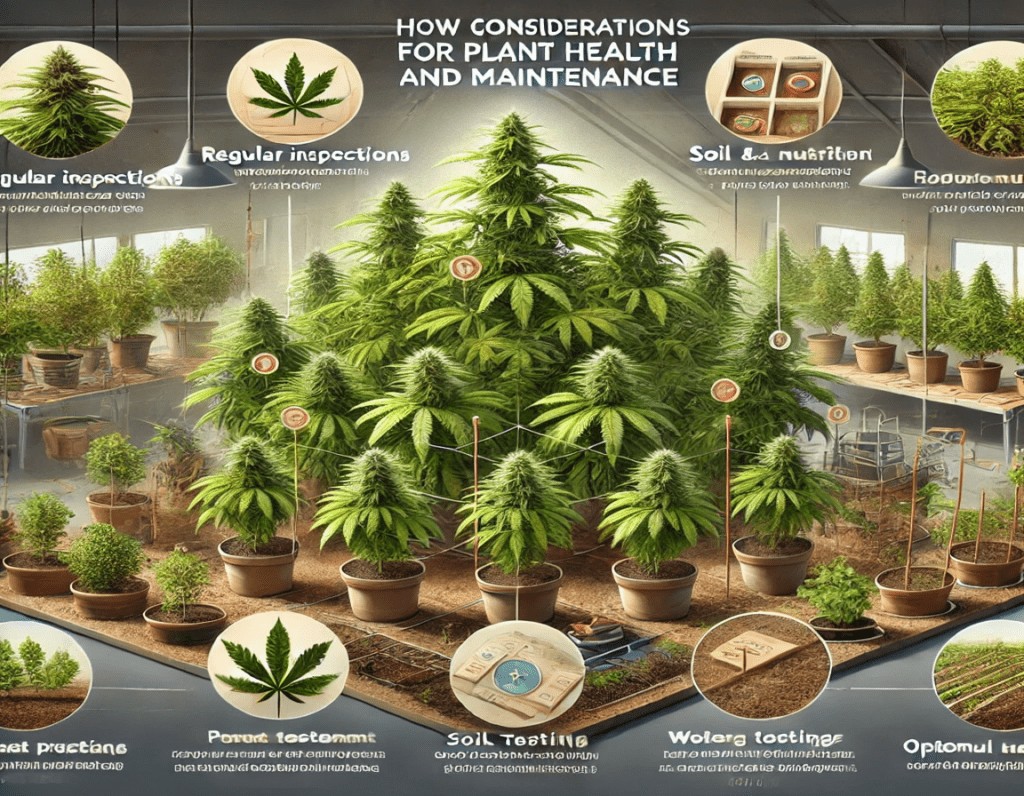
When it comes to cultivating Green Crack seeds in Canada, the choice between indoor and outdoor growing environments can significantly impact your results. Each method offers unique advantages and challenges, and understanding these differences is crucial for making an informed decision about how you will grow your cannabis.
Indoor cultivation allows for complete control over environmental conditions. You can manipulate factors such as light, temperature, humidity, and airflow to create an optimal environment for your plants. This level of control can lead to higher yields and better quality buds.
With indoor growing, you can also extend your growing season beyond the limitations of outdoor conditions, enabling multiple harvests throughout the year. By managing the light cycles, you can induce flowering at your discretion, allowing for flexibility in your cultivation schedule.
Growing Green Crack outdoors takes advantage of natural sunlight and fresh air, which can promote robust plant growth. However, outdoor cultivation is subject to environmental variables, such as weather changes and pest pressures, which can affect your yield and plant health.
Outdoor growing is also often more cost-effective. You can save on electricity by using the sun’s natural light and minimize initial investment costs associated with setting up an indoor grow room. That said, outdoor growing does come with its own set of challenges, including seasonal limitations and potential legal issues depending on your local regulations.

Indoor growing has numerous advantages, particularly for those who seek control and consistency in their cultivation efforts.
Temperature and Humidity: You can maintain ideal temperature ranges (70°F to 85°F or 21°C to 29°C) and humidity levels (40%-70%) throughout the growth cycle, reducing the risk of mold and pests. With a climate-controlled environment, you can create a perfect habitat for your Green Crack plants.
Light Management: Indoor growers can use high-intensity discharge (HID) or LED grow lights to provide the necessary light spectrum and duration, optimizing growth and flowering stages. This means that even during the shorter days of winter, your plants can still receive the light they need.
Airflow and Ventilation: Proper ventilation helps maintain optimal air circulation and reduces the likelihood of pest infestations or fungal diseases. Indoor growers can install exhaust fans, air purifiers, and oscillating fans to ensure fresh air is constantly moving through the grow space.
Consistent Harvests: Indoor growing allows you to cultivate multiple harvests throughout the year, maximizing your yield potential. You can control the light cycle to induce flowering at any time, which is especially beneficial in areas with short growing seasons.
Reliable Crop Quality: With controlled conditions, the quality of your buds can be consistent, as you can avoid the variability that comes with outdoor growing. This consistency is essential for growers who prioritize quality in their products.
Controlled Environment: By growing indoors, you minimize exposure to pests and diseases commonly found outdoors. This leads to healthier plants and less need for pesticides or herbicides. Indoor growers can also implement integrated pest management (IPM) practices more effectively.
Isolation from External Factors: Being indoors means you’re not affected by external weather conditions or animals, further reducing the chances of crop loss.

Outdoor growing also has its merits, especially for those looking to harness natural conditions.
Sunlight: Outdoor plants benefit from full-spectrum sunlight, which can enhance photosynthesis and contribute to larger yields. Natural sunlight is also more energy-efficient than artificial lighting, resulting in lower energy costs.
Soil Health: Growing in rich, natural soil can provide plants with essential nutrients and beneficial microorganisms, promoting healthy growth. Outdoor growers often find that organic soil amendments can lead to vibrant plant health and increased yield.
Natural Pollination: For those interested in breeding, outdoor environments allow for natural pollination, which can be beneficial for creating new strains or improving genetics.
Lower Setup Costs: Outdoor growing often requires less initial investment compared to indoor setups, which can involve substantial costs for lights, ventilation, and climate control systems. By utilizing existing outdoor spaces, you can significantly reduce costs.
Less Maintenance: While outdoor plants require care, the natural environment can often take care of aspects like light and moisture, reducing the need for constant monitoring.
Space for Growth: Outdoor plants generally have more space to spread out and grow larger than their indoor counterparts, potentially leading to higher yields per plant. In a spacious garden, each plant can reach its full genetic potential.
Access to Nature’s Elements: The natural environment can lead to more vigorous growth, as outdoor plants often experience a variety of conditions that can enhance their resilience.

While indoor cultivation offers many benefits, it also presents some challenges.
Setup Expenses: The initial investment for an indoor grow operation can be significant. Costs include lighting, fans, ventilation, and environmental control systems. For new growers, this can be a barrier to entry.
Ongoing Costs: The cost of electricity for lighting and climate control can add up, especially during the flowering phase when plants require more light and specific conditions.
High Electricity Usage: Indoor growing typically requires substantial energy for lighting and climate control, which can lead to higher utility bills. Efficient energy practices, such as using LED lights and optimizing climate control, can help mitigate these costs.
Carbon Footprint: Increased energy use can contribute to a larger carbon footprint. Growers concerned about sustainability may need to invest in energy-efficient practices.
Growing Expertise: Indoor gardening may require more advanced knowledge of horticulture to optimize environmental conditions and manage plant health. Learning how to balance all factors can be challenging for beginners.
Trial and Error: New growers may face a learning curve, as they experiment with different techniques and setups. This process can lead to mistakes that impact yield and plant health.

Outdoor growing also comes with its unique set of challenges.
Environmental Risks: Outdoor growers are subject to weather fluctuations, including rain, wind, and temperature extremes, which can negatively affect plant growth and yield. Sudden frost or heavy rains can lead to significant crop loss.
Seasonal Changes: In Canada, outdoor growers must be prepared for changing seasons, which can impact the growing cycle. Understanding local weather patterns is essential for timing your planting and harvesting correctly.
Increased Risk: Plants grown outdoors are more vulnerable to pests and diseases, which can lead to significant crop loss if not managed effectively. Implementing preventative measures, such as companion planting and organic pest control, can help mitigate these risks.
Wildlife Interference: Animals like deer and rabbits can damage your plants, requiring protective measures such as fencing or scare tactics.
Short Growing Season: In Canada, outdoor growing is limited to the warm months. The growing season may vary depending on your location, potentially reducing the total number of harvests. Understanding your local climate is crucial for timing your planting and harvesting correctly.
Frost Risks: Outdoor growers must be vigilant about the threat of early frost, which can damage plants before they are ready for harvest.

Regardless of your growing method, maintaining plant health is essential for achieving high yields and quality buds.
Whether you grow indoors or outdoors, regularly inspect your plants for signs of pests or diseases. Early detection is crucial for preventing larger outbreaks and protecting your yield.
In both environments, maintaining healthy soil is key. Test your soil regularly to ensure it has the right pH and nutrient balance. Indoor growers may use nutrient solutions, while outdoor growers can rely on organic amendments.
Consistent watering is critical for plant health. Avoid overwatering, which can lead to root rot, and ensure that your plants receive adequate moisture, especially during hot days.
Prune and train your plants to improve airflow and light penetration. Techniques such as topping, low-stress training (LST), and defoliation can help maximize yields.
Outdoor growing allows for natural sunlight, larger plant sizes, and lower initial costs compared to indoor setups.
The space required depends on the number of plants you wish to cultivate. A small tent or closet can suffice for a few plants.
During the vegetative stage, a light cycle of 18 hours on and 6 hours off is recommended, switching to 12/12 for flowering.
Outdoor growers face risks from weather fluctuations, pests, and limited growing seasons.
Regardless of the method, providing optimal conditions, regular maintenance, and using quality seeds will help maximize your yield.
We ship and deliver world wide via USPS and various couriers.
We offer a wide range of secure and anonymous online payment options.
We care about you, our customer. Please contact us with any questions or concerns.
Find out more about the benefits of being a loyal and regular customer.
WE ARE EVERY GROWERS ONE STOP SHOP TO ACQUIRE PREMIUM CANNABIS SEEDS FOR SALE IN THE USA, CANADA AND AUSTRALIA

Farmers Lab Seeds 2024, | All Right Reserved
Seeds are sold as novelty items, souvenirs, and collectibles. They contain 0% THC. We encourage our customers to check the legislation in their Country, State, Province, and Municipality prior to purchasing items from our store. We do not provide growing information.
All seeds are sold as hemp, and lab tested under 0.3% THC. This product is not for use by or sale to persons under the age of 21. This product should be used only as directed on the label. It should not be used if you are pregnant or nursing. Consult with a physician before use if you have a serious medical condition or use prescription medications. A Doctor’s advice should be sought before using this and any supplemental dietary product. All trademarks and copyrights are property of their respective owners and are not affiliated with nor do they endorse this product.
These statements have not been evaluated by the FDA. This product is not intended to diagnose, treat, cure or prevent any disease. Individual weight loss results will vary. By using this site, you agree to follow the Privacy Policy and all Terms & Conditions printed on this site. Void Where Prohibited by Law.